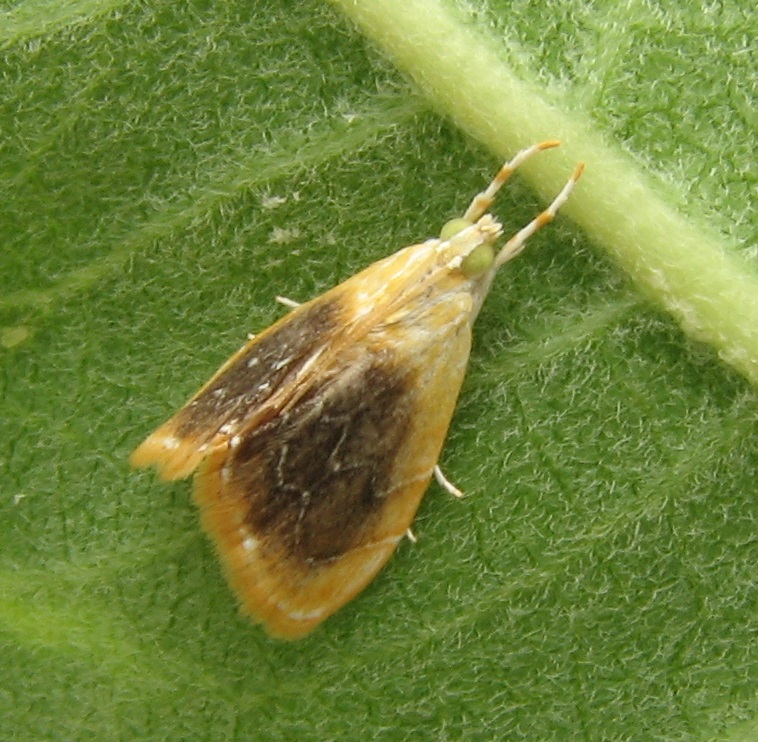|
Lipocosma Chiralis
''Lipocosma chiralis'' is a moth in the family Crambidae. The moth was described by William Schaus, Schaus in 1920, and today is found in Cuba. The wingspan is about 12 mm. The base of the forewings is white up to the middle of the costa and to one-third of the inner margin. It is bordered by a golden brown shade on the costa. The hindwings are silvery white with a black spot on the inner margin. There is a postmedial brown line and a brown terminal shade. References Glaphyriinae Moths described in 1920 Endemic fauna of Cuba {{Glaphyriinae-stub ...[...More Info...] [...Related Items...] OR: [Wikipedia] [Google] [Baidu] |
William Schaus
William Schaus (January 11, 1858 in New York City – June 20, 1942) was an American entomologist who became known for his major contribution to the knowledge and description of new species of the Neotropical Lepidoptera. Life William Schaus, Jr. was son of Wilhelm, later William Schaus, Sr. (1820–1892), a German-immigrant art collector and dealer, proprietor of the Schaus Galleries in New York City, and of Margaret Connover. He was educated initially at Exeter Academy and then in France and Germany, and was influenced early in his career by Henry Edwards, although he also studied languages, art and music. Schaus received the honorary degree of Master of Arts from the University of Wisconsin in 1921, and in 1925 that of honorary Doctor of Science from the University of Pittsburgh. He decided, despite parental opposition, and at the sacrifice of a promising career as successor in his father's business, to devote his life to the study of Lepidoptera. Beginning in 1881, he trave ... [...More Info...] [...Related Items...] OR: [Wikipedia] [Google] [Baidu] |
Moth
Moths are a paraphyletic group of insects that includes all members of the order Lepidoptera that are not butterflies, with moths making up the vast majority of the order. There are thought to be approximately 160,000 species of moth, many of which have yet to be described. Most species of moth are nocturnal, but there are also crepuscular and diurnal species. Differences between butterflies and moths While the butterflies form a monophyletic group, the moths, comprising the rest of the Lepidoptera, do not. Many attempts have been made to group the superfamilies of the Lepidoptera into natural groups, most of which fail because one of the two groups is not monophyletic: Microlepidoptera and Macrolepidoptera, Heterocera and Rhopalocera, Jugatae and Frenatae, Monotrysia and Ditrysia.Scoble, MJ 1995. The Lepidoptera: Form, function and diversity. Oxford, UK: Oxford University Press; 404 p. Although the rules for distinguishing moths from butterflies are not well est ... [...More Info...] [...Related Items...] OR: [Wikipedia] [Google] [Baidu] |
Crambidae
The Crambidae are the grass moth family of lepidopterans. They are variable in appearance, the nominal subfamily Crambinae (grass moths) taking up closely folded postures on grass stems where they are inconspicuous, while other subfamilies include brightly coloured and patterned insects which rest in wing-spread attitudes. In many classifications, the Crambidae have been treated as a subfamily of the Pyralidae or snout-moths. The principal difference is a structure in the tympanal organs called the praecinctorium, which joins two tympanic membranes in the Crambidae, and is absent from the Pyralidae. The latest review by Munroe and Solis, in Kristensen (1999), retains the Crambidae as a full family. The family currently comprises 15 subfamilies with altogether 10,347 species in over 1,000 genera. Systematics *subfamilia incertae sedis **''Conotalis'' Hampson, 1919 **''Exsilirarcha'' Salmon & Bradley, 1956 *Subfamily Acentropinae Stephens, 1836 *Subfamily Crambinae Latreill ... [...More Info...] [...Related Items...] OR: [Wikipedia] [Google] [Baidu] |
Cuba
Cuba ( , ), officially the Republic of Cuba ( es, República de Cuba, links=no ), is an island country comprising the island of Cuba, as well as Isla de la Juventud and several minor archipelagos. Cuba is located where the northern Caribbean Sea, Gulf of Mexico, and Atlantic Ocean meet. Cuba is located east of the Yucatán Peninsula (Mexico), south of both the American state of Florida and the Bahamas, west of Hispaniola (Haiti/Dominican Republic), and north of both Jamaica and the Cayman Islands. Havana is the largest city and capital; other major cities include Santiago de Cuba and Camagüey. The official area of the Republic of Cuba is (without the territorial waters) but a total of 350,730 km² (135,418 sq mi) including the exclusive economic zone. Cuba is the second-most populous country in the Caribbean after Haiti, with over 11 million inhabitants. The territory that is now Cuba was inhabited by the Ciboney people from the 4th millennium BC with the Gua ... [...More Info...] [...Related Items...] OR: [Wikipedia] [Google] [Baidu] |
Wingspan
The wingspan (or just span) of a bird or an airplane is the distance from one wingtip to the other wingtip. For example, the Boeing 777–200 has a wingspan of , and a wandering albatross (''Diomedea exulans'') caught in 1965 had a wingspan of , the official record for a living bird. The term wingspan, more technically extent, is also used for other winged animals such as pterosaurs, bats, insects, etc., and other aircraft such as ornithopters. In humans, the term wingspan also refers to the arm span, which is distance between the length from one end of an individual's arms (measured at the fingertips) to the other when raised parallel to the ground at shoulder height at a 90º angle. Former professional basketball player Manute Bol stood at and owned one of the largest wingspans at . Wingspan of aircraft The wingspan of an aircraft is always measured in a straight line, from wingtip to wingtip, independently of wing shape or sweep. Implications for aircraft design an ... [...More Info...] [...Related Items...] OR: [Wikipedia] [Google] [Baidu] |
Glaphyriinae
Glaphyriinae is a subfamily of the lepidopteran family Crambidae. It was described by William Trowbridge Merrifield Forbes in 1923. The subfamily currently comprises 509 species in 75 genera. The larvae of Glaphyriinae predominantly feed on plants of the order Brassicales and are able to digest the glucosinolates contained in these plants. Genera *''Abegesta'' Munroe, 1964 *''Achantodes'' Guenée, 1852 *''Aenigmodes'' Amsel, 1957 (= ''Aenigma'' Amsel, 1956) *''Aethiophysa'' Munroe, 1964 *''Agastya'' Moore, 1881 (= ''Agastia'' Moore, 1881) *''Aureopteryx'' Amsel, 1956 *''Catharia'' Lederer, 1863 *''Cereophagus'' Dyar, 1922 *'' Chalcoela'' Zeller, 1872 *''Chilomima'' Munroe, 1964 *''Chilozela'' Munroe, 1964 *''Contortipalpia'' Munroe, 1964 *'' Cosmopterosis'' Amsel, 1956 *''Dichochroma'' Forbes, 1944 *''Dicymolomia'' Zeller, 1872 (= ''Bifalculina'' Amsel, 1956) *''Eupoca'' Warren, 1891 *''Eustixia'' Hübner, 1823 (= ''Thelcteria'' Lederer, 1863, ''Thlecteria'' Dyar, 1925) *'' Ev ... [...More Info...] [...Related Items...] OR: [Wikipedia] [Google] [Baidu] |
Moths Described In 1920
Moths are a paraphyletic group of insects that includes all members of the order Lepidoptera that are not butterflies, with moths making up the vast majority of the order. There are thought to be approximately 160,000 species of moth, many of which have yet to be described. Most species of moth are nocturnal, but there are also crepuscular and diurnal species. Differences between butterflies and moths While the butterflies form a monophyletic group, the moths, comprising the rest of the Lepidoptera, do not. Many attempts have been made to group the superfamilies of the Lepidoptera into natural groups, most of which fail because one of the two groups is not monophyletic: Microlepidoptera and Macrolepidoptera, Heterocera and Rhopalocera, Jugatae and Frenatae, Monotrysia and Ditrysia.Scoble, MJ 1995. The Lepidoptera: Form, function and diversity. Oxford, UK: Oxford University Press; 404 p. Although the rules for distinguishing moths from butterflies are not well est ... [...More Info...] [...Related Items...] OR: [Wikipedia] [Google] [Baidu] |



